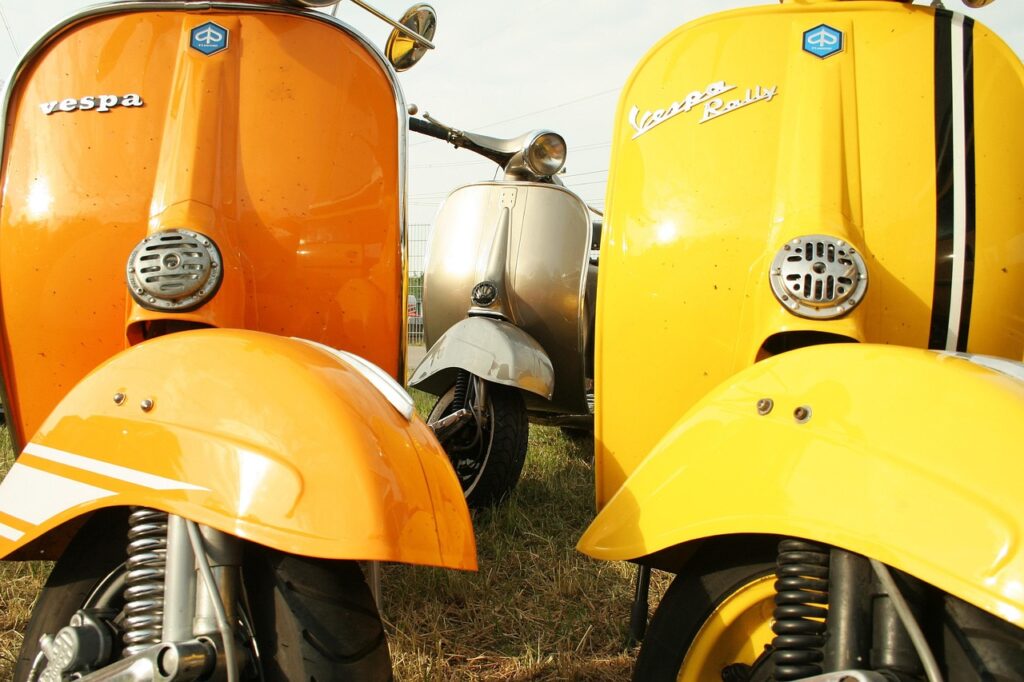The Vespa
The History of the Vespa
Conceived in the tumultuous post-World War II era, the Vespa scooter emerged as a symbol of innovative design and European resilience. In 1946, amid the backdrop of a war-torn Italy struggling with economic instability and a shortage of affordable transportation, the Italian company Piaggio launched its revolutionary two-wheeled vehicle. The Vespa was originally created to serve as a cheap and practical means of transportation, one that could navigate the scarred streets and dust tracks of a country desperate to rebuild. Its name, translates as “wasp” in Italian, inspired partly by the scooter’s sleek, agile profile and buzzing sound that invoked a sense of spirited resilience.
What set the Vespa apart from other machines of the same era was not merely its practicality, but also the elegance of its design. Engineered with an integrated chassis that concealed the engine and mechanical components, the Vespa was a harmonious blend of form and function. This inovative design not only contributed to its distinctive aesthetic appeal, but also enhanced user safety by minimizing exposure to moving parts. The Vespa quickly transcended its utilitarian origins to become a cultural icon. It featured prominently in films such as “Roman Holidays” and “Quadrophenia” thus it was embraced by youth movements across Europe and America, symbolizing freedom and a modern lifestyle at a time when traditional social structures were being questioned and redefined. Over the decades, the Vespa evolved technologically and stylistically, adapting to changing trends in urban transportation and automotive engineering.

While advanced variants incorporated improved suspension systems, alternative fuel options, and ergonomic enhancements, the classic design embodied in a minimalist yet functional silhouette has remained remarkably consistent over the years to present day. The Vespa’s evolution is expression of a broader narrative of mid-20th-century innovation: a period characterized by rapid technological advancements coupled with strong quest for efficient urban mobility, and burgeoning expressions of individual identity. As such, the Vespa stands out as an enduring testament not only to Italian craftsmanship but also to a cultural moment when practicality, artistry, and ingenuity converged.
Today, more than seventy years after its inception, the Vespa continues to captivate enthusiasts around the globe. Its persistent allure is largely attributed to its unique ability to blend heritage with modernity, echoing the sentiment that great design is both timeless and transformative. As cities worldwide grapple with the demands of sustainable mobility, the Vespa’s legacy serves as inspiration and a reminder that innovation, when grounded in thoughtful design and purposeful function, can propel an entire society forward.
